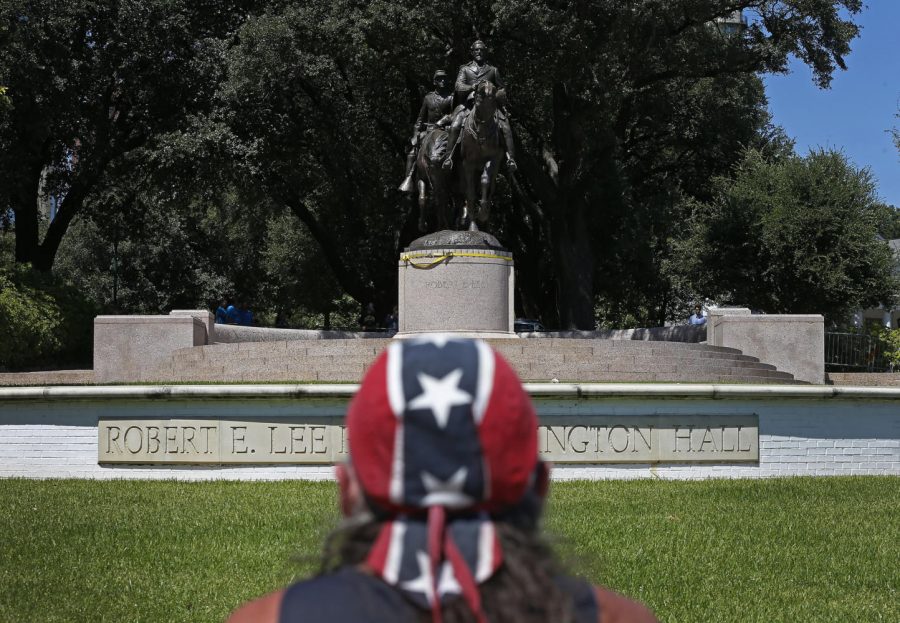What Americans can learn from controversy over confederate statues, Charlottesville
Johnny Carpenter looks at the statue of Robert E. Lee at Robert E. Lee Park in Dallas on Thursday, Sept. 7, 2017. (Jae S. Lee/Dallas Morning News/TNS)
Historical figures are not mythical beings that only epitomize the ideals of our society – they are humans with both great accomplishments and dark aspects that form their legacy. The distinction is what they are known for.
We celebrate people such as Thomas Jefferson and George Washington for their contributions to creating the United States and writing the Constitution on which we still base the foundation of our country for over 200 years later.
It is also historically accurate to state that the aforementioned statesmen along with some of the other founding fathers simultaneously vocalized the belief that “all men are created equal” while owning slaves.
However, the distinction arises with the confederate flag and statues, which commemorate confederate leaders who were proponents and emblems of African-American oppression, pain, and suffering that is part of our country’s history.
The Confederate flag was birthed by men and women who wanted to tear this country apart over the issue of slavery.
In keeping these statues, we not only commemorate the people who fought to enslave an entire race but also the legacy of white supremacy and racism that the Confederate flag continues to uphold today.
Still, there are many who claim that removing confederate statues is erasing history rather than acknowledging it.
Perhaps we can learn more from those empty pedestals that symbolize some of the darkest days in our history than keeping these statues that symbolize oppression to an entire race.
We could use the abandoned pedestals as the start of a more incisive conversation about America’s history of race relations.
Moreover, what history do the physical statues represent, anyway? According to a study done by the Southern Poverty Law Center, the two major upticks in confederate statues, monuments, and other sites were not after the Civil War but during the last century.
The first significant spike was during the early 1900s and 1910s when Jim Crow laws were enacted around the country, and according to the study, “This spike lasted well into the 1920s, a period that saw a dramatic resurgence of the Klu Klux Klan.”
The second spike was during the mid 1950s- 1960s, during the civil rights movement.
The statues were a deliberate means of endorsing the disenfranchisement of African-Americans by the people who wanted to keep racism and discrimination alive. They are not a “proud” symbol of our history.
Over 150 years after the Civil War, the visceral, impassioned responses to the dismantling symbols of confederacy and supremacy have animated many a discussion in our society.
This may be an important learning moment when we as Americans can step forward, acknowledge the pain of racism and suppression by supporting the removal of the confederate statues.
Let us use this moment to move the discussion forward on healing racial tensions in this country.
Sources:







